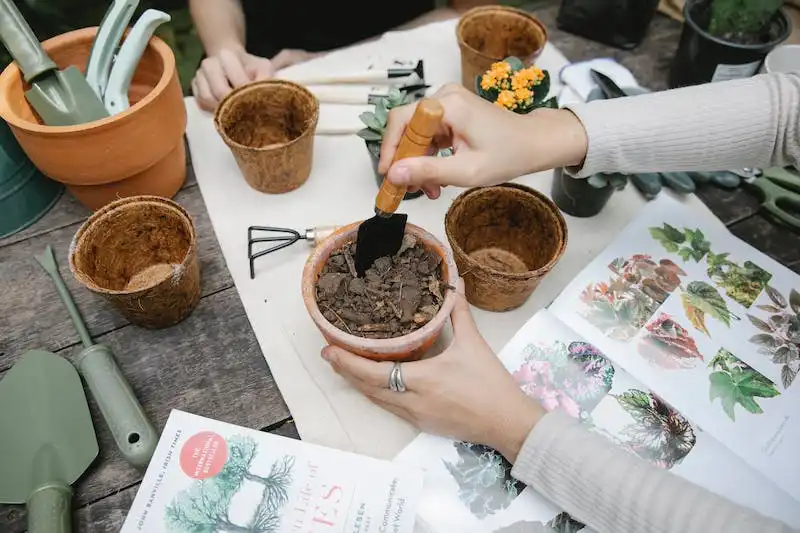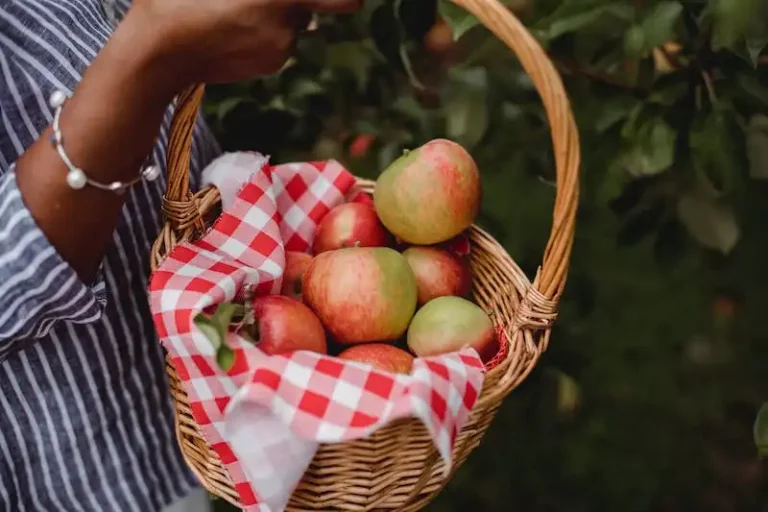When it comes to cacti, everything seems a bit slower – their growth, their blooming, and even their maturation process. Cacti follow a unique cycle, different from most other plants. If you’ve ever seen a nopal cactus or other prickly pear cactus, you probably know that these plants take their sweet time to produce fruits. But just how long does it take for a cactus to go from pollination to fully grown fruit? Here’s a breakdown of the five stages of cactus growth and how long each stage typically takes.
Stage 1: Germination (1 week to 1 month)
It all starts with a seed. Cacti seeds can vary in size and color, from small and green to larger, purple-red seeds. Once the cactus seed is planted, it will begin to germinate, usually taking about one week to one month. During this stage, the seed absorbs water and nutrients from the soil, and a tiny cactus sprout emerges.
Stage 2: Seedling Growth (1 to 3 months)
As the cactus seedling continues to grow, it will develop two cotyledons, which are small, leaf-like structures. These cotyledons provide energy and sustenance for the growing cactus. During this stage, the cactus will also start to form tiny thorns or spines, which serve as a defense mechanism against predators.
Stage 3: Vegetative Growth (1 to 2 years)
The vegetative growth stage is when the cactus really starts to take shape. It begins to grow larger and develop more prominent spines. This stage can take anywhere from one to two years, depending on the species of cactus. During this time, the cactus requires regular watering and occasional fertilizer to support its growth.
Stage 4: Flowering (1 to 2 years)
Once the cactus has reached a certain size and maturity, it will enter the flowering stage. Most cacti produce brightly colored flowers, ranging from vibrant reds and yellows to more unusual hues. The duration of the flowering stage can vary, but it usually lasts for about one to two weeks. During this time, the cactus relies on pollination by insects or birds to produce fruits.
Stage 5: Fruit Maturation (4 to 6 months)
After successful pollination, the cactus fruits begin to form. The fruits start as small, green buds and gradually grow in size and change color. Depending on the species, cactus fruits can take anywhere from four to six months to ripen. Once they are ripe, most cactus fruits have a thick, heavy skin that needs to be peeled before the edible flesh can be enjoyed. From planting the seed to fully grown, colored fruits, a complete cactus growth cycle can take several years.
So, the next time you see a cactus with beautiful flowers or mature fruits, remember the long and patient journey it took to reach that stage. Cacti may be slow-growing, but their unique growth cycle and resilient nature make them truly fascinating plants.
Planting Prickly Pear Cactus How To Grow A Prickly Pear
Prickly pear cactus, also known as Opuntia, is a type of cactus that is native to the Americas. It is named after its large, prickly pears that grow on the pads of the cactus. Growing prickly pear cactus can be a rewarding experience, but it requires some care and attention.
Planting: To grow a prickly pear cactus, start by finding a sunny spot in your garden or yard. Prickly pear cacti prefer full sun exposure, although they can tolerate some shade. Make sure the soil is well-draining, as they do not like to sit in water. If your soil is heavy or clay-like, consider adding some sand or perlite to improve drainage.
Propagation: Prickly pear cactus can be grown from seed or by planting pads. To grow from seed, collect prickly pear fruits, also called tunas, when they are ripe. Remove the seeds from the fruit and plant them in well-draining soil. Keep the soil moist and place the container in a warm location. Seedlings will usually start to sprout in a couple of weeks. To grow from pads, simply cut off a pad from a mature cactus and let it dry for a few days to form a callus. Then, plant the pad in well-draining soil and water sparingly until root formation begins.
Growth Stages: Prickly pear cacti go through several stages of growth. The first stage is the seedling stage, where the cactus begins to sprout and form roots. This stage typically takes a few weeks to a couple of months. The second stage is the pad formation stage, where the cactus grows larger and forms new pads. This stage can take several years, depending on the variety of prickly pear cactus. The third stage is the flowering stage, where the cactus produces beautiful, vibrant colored flowers. This stage usually occurs in the spring or summer. The final stage is the fruiting stage, where the prickly pears start to develop and mature. The time it takes for the cactus to reach this stage varies depending on growing conditions and variety.
Tips for Care: Prickly pear cactus is relatively low-maintenance, but there are a few things to keep in mind. They are drought-tolerant plants and do not require frequent watering. Water deeply but infrequently, allowing the soil to dry out between waterings. Prickly pear cacti are also susceptible to pests, such as aphids and scale insects. Inspect your plants regularly and remove any pests you find. Pruning should be done with caution, as the spines can be sharp and may cause injury. Wear thick gloves and use a long-handled tool to brush away any unwanted growth.
Harvesting and Enjoying: Prickly pear cactus fruits, or prickly pears, are edible and can be harvested when they turn a vibrant color and are easily plucked from the cactus. Use a pair of tongs or gloves to remove the prickly pears, as the spines can hurt if touched. Once harvested, the prickly pears can be eaten fresh or used in various recipes. They have a sweet, slightly tart flavor and can be enjoyed on their own or added to salads, salsas, or desserts. Prickly pears are also known for their health benefits, as they are rich in antioxidants and contain vitamins A and C.
Whether you’re starting from seed or planting mature pads, growing a prickly pear cactus can be a rewarding experience. With proper care and attention, you can enjoy the beauty of these unique plants in your garden for many years to come.
Image source: pixabay.com
Prickly Pear Plant Characteristics
The Prickly Pear plant, also known as Opuntia, is a type of cactus that belongs to the Cactaceae family. It is native to North and South America, and it is well-known for its unique characteristics and adaptations to different environments.
One of the key characteristics of the Prickly Pear plant is its exposure to sunlight. It requires at least 4 to 6 hours of direct sunlight each day to grow and thrive. However, it can tolerate partial shade as well, making it suitable for a wide range of growing zones.
The Prickly Pear plant has distinctive pads, often referred to as “nopales,” that grow in a flat, oval shape. These pads are green in color and can sometimes have a yellow-orange tint. They are covered in spines, so it is important to handle them with caution to avoid getting hurt or brushed against the spines.
When the Prickly Pear plant is dormant, it appears bare without any pads or spines. However, when the weather starts to warm up, new pads begin to form, eventually covering the entire plant. This process usually takes a couple of months.
The Prickly Pear plant is often grown in well-draining soil, as it does not tolerate heavy or waterlogged soil. It is also able to withstand drought conditions and is often seen in arid regions. This plant is quite hardy and can survive in extreme temperatures, including freezing temperatures.
Aside from its unique appearance, the Prickly Pear plant also produces attractive flowers, usually in the spring or summer. The flowers can be various colors, including pink, yellow, orange, or red. These flowers are not only visually appealing but also serve as a food source for pollinators.
In addition to its beauty, the Prickly Pear plant is also valued for its edible fruit, known as “prickly pears.” These fruits are often used in cooking, particularly in Mexican cuisine. They have a sweet and tangy taste and can be eaten raw or used to make jams, jellies, or beverages.
While the Prickly Pear plant is generally low-maintenance, it can be susceptible to certain diseases and pests. Common pests that may affect the plant include aphids, mealybugs, and spider mites. Additionally, it is important to protect the plant from extreme weather conditions, such as heavy rain or frost, as it can damage the pads and flowers.
In conclusion, the Prickly Pear plant is a fascinating cactus with unique characteristics and adaptations. From its exposure to sunlight to its distinctive pads and edible fruit, this plant has it all. Whether you are a gardening enthusiast or simply want to add a touch of beauty to your outdoor space, the Prickly Pear plant is an excellent choice.
Types of Prickly Pear
Prickly pear cacti, also known as Opuntia, are a popular type of cactus found in many regions around the world. There are several different varieties of prickly pear cactus, each with its own unique characteristics. Here are some of the most common types:
1. Opuntia Humifusa: Also known as the Eastern prickly pear or the Devil’s-tongue cactus, Opuntia humifusa is native to the eastern United States. It is a low-growing cactus that produces yellow or orange flowers and flat pads.
2. Opuntia Ficus-Indica: This variety of prickly pear cactus is also known as the Indian fig opuntia or the Barbary fig. It is commonly found in Mexico and other warm areas, and it is known for its large fruits and flat pads.
3. Opuntia Cylindrica: Also known as the cane cholla or the serpent cactus, Opuntia cylindrica has cylindrical stems that vary in size and shape. It is native to the southwestern United States and Mexico.
4. Opuntia Microdasys: Commonly known as the bunny ear cactus or the polka-dot cactus, Opuntia microdasys has flat pads that resemble bunny ears. It is native to Mexico and is popular in gardening due to its unique appearance.
5. Opuntia Engelmanii: Also known as the Engelmann’s prickly pear, this variety is native to the United States and Mexico. It has long spines and yellow flowers, and it is often used for decorative purposes.
6. Opuntia Basilaris: The beavertail prickly pear or the beavertail cactus is native to the southwestern United States. It has flat pads that are shaped like a beavertail and produces pink flowers.
7. Opuntia Fulgida: Also known as the jumping cholla or the hanging chain cholla, Opuntia fulgida is native to the southwestern United States and Mexico. It has cylindrical pads covered in spines.
8. Opuntia Lasiacantha: This variety of prickly pear cactus is commonly known as the plains prickly pear. It is native to the central and southwestern United States and has flat pads and yellow flowers.
These are just some of the many types of prickly pear cacti that you may come across. Each variety has its own unique features and growth requirements, so it’s important to consider these factors when planting and caring for prickly pear cacti.




